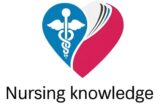The RAAS is a hormone system that plays a central role in regulating blood pressure, fluid balance, and electrolyte homeostasis. It is activated when the body senses low blood pressure, reduced sodium concentration, or diminished renal blood flow.
Key Components and Their Functions
- Renin
o Origin: Produced and secreted by juxtaglomerular (JG) cells in the kidney.
o Triggers for Secretion:
Low blood pressure.
Decreased sodium chloride delivery to the distal tubule.
Sympathetic nervous system stimulation.
o Function: Initiates the RAAS cascade by converting angiotensinogen to angiotensin I. - Angiotensinogen
o Origin: A glycoprotein produced mainly by the liver.
o Function: The precursor molecule that is cleaved by renin to form angiotensin I. - Angiotensin I
o Formation: Result of renin acting on angiotensinogen.
o Properties: A decapeptide with little direct physiological activity.
o Next Step: Converted to the active form, angiotensin II, by angiotensin-converting enzyme (ACE). - Angiotensin-Converting Enzyme (ACE)
o Location: Predominantly found in the lungs and endothelial cells.
o Function: Converts angiotensin I to angiotensin II by removing two amino acids. - Angiotensin II
o Potency: A potent vasoconstrictor.
o Actions:
Vasoconstriction: Narrows blood vessels, increasing blood pressure.
Stimulation of Aldosterone Secretion: Acts on the adrenal cortex.
Promotes ADH Release: Enhances water reabsorption from the kidneys.
Direct Effects on the Kidneys: Increases sodium reabsorption and reduces renal blood flow in some regions, further promoting fluid retention.
Central Effects: Can influence thirst and salt appetite via central nervous system pathways. - Aldosterone
o Source: Secreted by the adrenal cortex.
o Action: Acts on the distal convoluted tubules and collecting ducts in the kidney.
o Function: Increases sodium reabsorption and potassium excretion, leading to water retention and an increase in blood volume and blood pressure.
RAAS Cascade: Step-by-Step Process

- Initiation (Triggering Events):
o When blood pressure drops, sodium levels are low, or renal perfusion is compromised, the juxtaglomerular (JG) cells in the kidneys release renin. - Renin Release and Action:
o Renin cleaves angiotensinogen (from the liver) into angiotensin I. - Conversion to Angiotensin II:
o Angiotensin I travels through the bloodstream and is converted into angiotensin II by ACE, primarily in the lungs. - Angiotensin II Effects:
o Vasoconstriction: It constricts blood vessels, raising systemic vascular resistance and blood pressure.
o Aldosterone Secretion: It prompts the adrenal cortex to secrete aldosterone.
o ADH Secretion: It stimulates the posterior pituitary to release antidiuretic hormone (ADH), further promoting water reabsorption. - Aldosterone and Sodium Retention:
o Aldosterone acts on kidney nephrons to increase sodium (and thus water) reabsorption, which helps to restore blood pressure and volume.
o In exchange, potassium is secreted into the urine, impacting electrolyte balance.
Physiological Effects and Feedback Mechanisms
Blood Pressure Regulation:
RAAS increases blood pressure through vasoconstriction (direct effect of angiotensin II) and by increasing blood volume (via aldosterone-mediated sodium and water retention).
Fluid and Electrolyte Balance:
The system ensures that sodium levels remain within a narrow range while also modulating potassium levels through aldosterone activity.
Feedback Inhibition:
Once blood pressure and volume return to normal, the reduced stimulus on the kidneys decreases renin release, thus downregulating the RAAS cascade.
Interplay with Other Hormones:
o ADH (antidiuretic hormone) works synergistically to retain water.
o Atrial Natriuretic Peptide (ANP), released by the heart in response to increased blood volume, acts to counterbalance RAAS effects by promoting vasodilation and sodium excretion.
Clinical Relevance
Hypertension:
Overactivation of the RAAS is a common factor in the development of high blood pressure.
Medications that target RAAS components (such as ACE inhibitors and angiotensin receptor blockers) are commonly used to treat hypertension.
Heart Failure:
In heart failure, RAAS activation contributes to fluid overload, which can exacerbate symptoms. Blocking RAAS components can help reduce cardiac workload.
Kidney Disease:
Chronic kidney disease (CKD) may lead to persistent activation of RAAS, contributing to further kidney damage. RAAS inhibitors are often used to slow the progression of kidney damage in such patients.
Other Conditions:
Conditions like diabetic nephropathy and certain endocrine disorders may also involve dysregulation of RAAS, further emphasizing its central role in cardiovascular and renal health.
you can also visit- Large intestine anatomy and physiology
